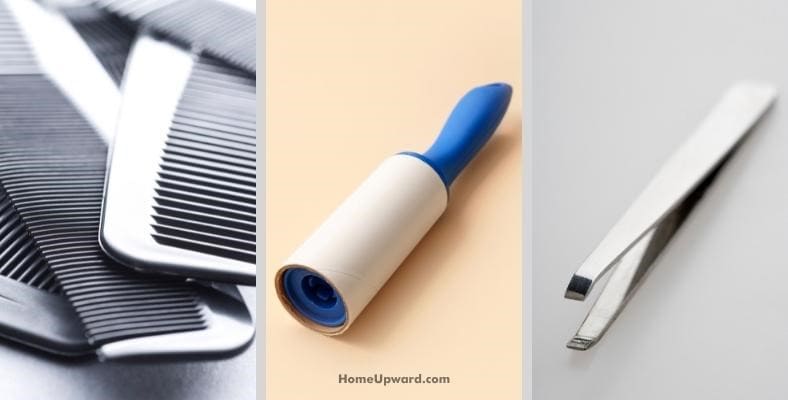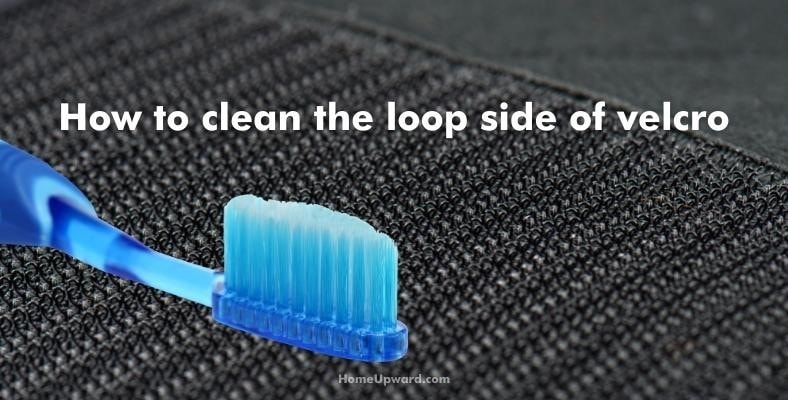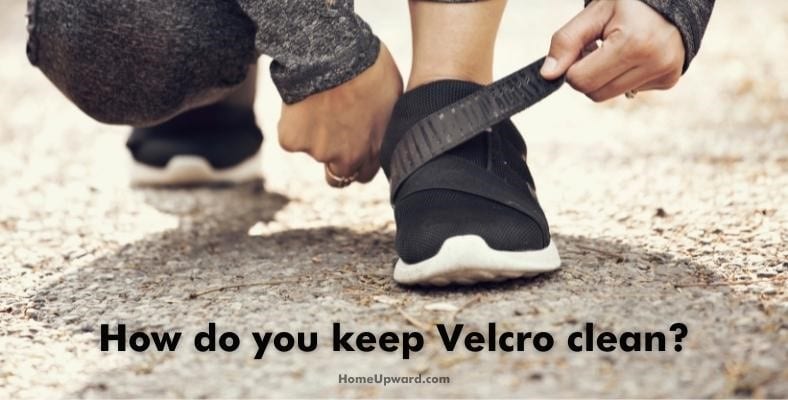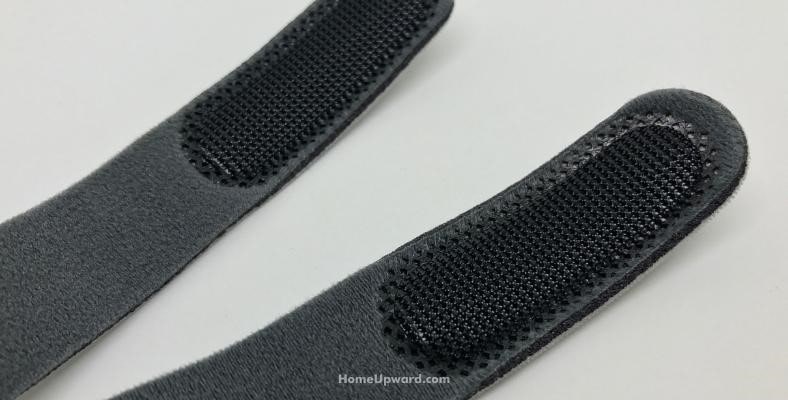Velcro can be a real pain to keep clean. You may have even wondered if it’s time to replace it. Not to worry!
In this article, I’ll cover some great ways to a lot of time and effort cleaning dirty Velcro (and avoid having to replace it, too).
Contents
Velcro Cleaning Hacks
Using a Fine-Tooth Comb
Using a fine-tooth comb is the most thorough way to clean the looped side of velcro with household items. Whether it’s an actual hair comb or a pet brush doesn’t matter as long as:
- It has fine “teeth”
- It’s firm enough not to bend/break
- It’s dense for thoroughly cleaning the velcro
Using a comb that fits this description, gently comb through the looped side of the velcro and watch as the lint/dirt gets pulled out.
A pet comb also works wonders since they have fine teeth made of rigid metal.
Using a Lint Roller
The second of the cleaning velcro hacks is using a lint roller or duct tape. This trick can clean the soft side of the velcro, the side that’s very flat, not the side with all the loops.
The soft side of the velcro is just a bunch of tiny holes, so dirt/dust gets stuck in them easily.
The trick is super simple:
- Stick the adhesive to the soft side of the velcro to pull out the dust/dirt.
- Do this by rolling a lint roller across the surface or by sticking and unsticking duct tape a few times.
Cleaning Velcro with a Toothbrush or Nail Brush
A nail brush or toothbrush will work the same way for this trick, but nail brushes are usually bigger, making them a more popular option.
Using either one of these tools, rub the looped side of the velcro to knock all the debris loose. Position the brush at an angle, and try to use the edges of the brush and not hold it 90 degrees against the velcro.
Using Tweezers
Using a pair of tweezers is the safest way to clean velcro as it doesn’t risk damaging the velcro loops. The drawback is that it’s also the most time-consuming and tedious method.
When using tweezers, it’s as simple as picking out any debris possible. Usually any dirt/dust will be visible on the velcro and easy to pick out.
Water, Dish Soap, and a Brush
If the velcro has tough debris stuck on it and the previous methods haven’t worked, some warm water and dish soap will usually do the trick. All that’s required is:
- Warm/Hot Water
- Dish Soap
- Toothbrush/Nail Brush
Once the water is warm, start by running the water over the velcro to soften up whatever debris may be stuck. Then apply a small amount of dish soap to the velcro or brush and gently scrub!
The warm water and dish soap will take care of almost anything stuck in there, so don’t scrub so hard. Scrubbing too hard will damage the velcro and possibly even ruin it, so gently knock out the debris only.
Using the Second Piece of Velcro
If there happens to be an extra piece of velcro lying around, it’s a time saver! Using the looped side, gently rub the second piece of velcro on the first one, and it will create enough friction to clear stuck dust/dirt.
How to Clean the Loop Side of Velcro
Each of the cleaning velcro hacks mentioned so far apart from the lint roller method effectively cleans the looped side. Ranked by ease and quickness, the top five methods for cleaning the loop side are:
- A toothbrush or Nail Brush
- Second Piece of Velcro
- Fine Tooth Comb
- Warm Water and Dish Soap
- Tweezers
Do You Have to Clean Velcro?
So the simple answer is: Yes, from time to time. Velcro doesn’t require constant maintenance but cleaning goes a long way to extend its useful lifetime.
Velcro is a fascinating and elegantly simple product. While it may not be necessary to clean velcro too often, cleaning it will keep it working longer.
Dust, dirt, and other debris naturally get caught in velcro and if enough debris builds up it can prevent the velcro from working. Keeping all that debris out of the velcro will ensure that it gets the maximum lifespan possible.
How Do You Keep Velcro Clean?
There is no way to stop debris from occasionally getting stuck in the velcro. The easiest way to prevent unwanted accumulations is to keep the velcro fastened as much as possible.
Keeping velcro pieces stuck together closes most of the places where debris could’ve gotten stuck. This still exposes the sides where lint, dust, and debris can accumulate.
Ensure that velcro is fastened when it will be exposed to debris, such as:
- When in the washing machine or dryer
- When outside
- When exposed to other clothes/cotton
Keeping the velcro fastened as much as possible, but especially in these places, will reduce the amount of debris that gets stuck significantly.
The first step is to thoroughly clean it using any of the cleaning velcro hacks previously mentioned. After being fully cleaned it should be able to stick and start working again. If it’s still not working well after being cleaned the velcro is most likely too damaged to use anymore and should be replaced.
Keeping velcro clean is often mandatory, especially when used in hospital settings. Maintain the tidiness of velcro by trimming off any stray “hairs” on the soft side to prevent them from attracting other lint and debris.
Do this by sticking the velcro together and trimming off any strays sticking out along the sides. Use a sharp blade or fine pair of scissors to prevent damaging any surrounding fabric.
Why Does Velcro Stop Working?
Velcro can stop working for two different reasons: Dirt/dust is clogging the velcro and it needs cleaning, or the loops are too damaged and the velcro needs replacement.
Most of the time it will be the reason above, but if velcro sees frequent use then there is a chance that it might be time to get a new piece of velcro sewn in. Luckily, if velcro has seemingly stopped working, it’s easy to figure out most of the times.
How Long Does Velcro Last?
As a general rule, good quality Velcro hook an loop fasteners are rated for a life (useful life) of about 10,000 attach and release cycles. That’s several years at least, likely close to 10 years of use for average, light-duty use.
(Their effectiveness and long life makes them crucial for medical and surgical use, in fact!)
Different things determine how long a piece of velcro will last. The main factors are:
- Moisture of Air
- Temperature
- UV Radiation (length of exposure to sunlight)
- Material (Nylon vs. Polyester)
- Frequency of ripping apart and sticking back together.
There is no “one size fits all” answer to the specific lifetime of the velcro because it depends on several factors as I listed above. Each can have such a significant impact on the lifespan of the velcro that some velcro pieces seemingly last forever while some constantly wear out.
One thing is for sure: maintaining your Velcro fasteners helps them last longer and helps keep their fastening strength good.






